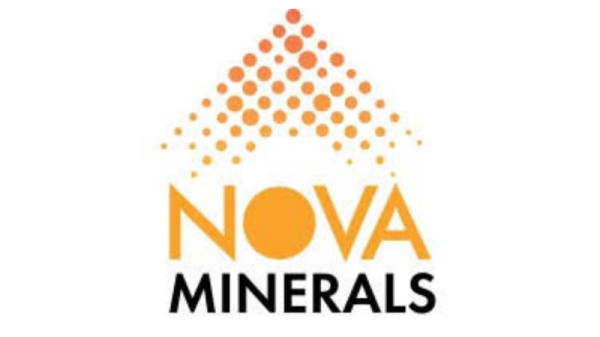The launch of a revolutionary satellite that will reveal celestial objects in a new light and the “Moon Sniper” lunar lander has been postponed.
Liftoff was expected at at 8:26 p.m. ET Sunday, or 9:26 a.m. Japan Standard Time on Monday, but inclement weather — and specifically high upper winds above the launch site — led to the postponement less than 30 minutes prior, according to the Japan Aerospace Exploration Agency. While the agency has not announced a new launch date, the launchpad at the Tanegashima Space Center is reserved through September 15.
The launch had already been rescheduled twice due to bad weather.
The XRISM satellite (pronounced “crism”), also called the X-Ray Imaging and Spectroscopy Mission, is a joint mission between JAXA and NASA, along with participation from the European Space Agency and Canadian Space Agency.
Along for the ride is JAXA’s SLIM, or Smart Lander for Investigating Moon. This small-scale exploration lander is designed to demonstrate a “pinpoint” landing at a specific location within 100 meters (328 feet), rather than the typical kilometer range, by relying on high-precision landing technology. The precision led to the mission’s nickname, Moon Sniper.
The satellite and its two instruments will observe the universe’s hottest regions, largest structures and objects with the strongest gravity, according to NASA. XRISM will detect X-ray light, a wavelength invisible to humans.
Studying stellar explosions and black holes
X-rays are released by some of the most energetic objects and events in the universe, which is why astronomers want to study them.
“Some of the things we hope to study with XRISM include the aftermath of stellar explosions and near-light-speed particle jets launched by supermassive black holes in the centers of galaxies,” said Richard Kelley, XRISM principal investigator at NASA’s Goddard Space Flight Center in Greenbelt, Maryland, in a statement. “But of course, we’re most excited about all the unexpected phenomena XRISM will discover as it observes our cosmos.”
Compared with other wavelengths of light, X-rays are so short that they pass through the dish-shaped mirrors that observe and collect visible, infrared and ultraviolet light such as the James Webb and Hubble space telescopes.
With that in mind, XRISM has thousands of curved individual nested mirrors better designed to detect X-rays. The satellite will need to calibrate for a few months once it reaches orbit. The mission is designed to operate for three years.
The satellite can detect X-rays that have energies ranging from 400 to 12,000 electron volts, which is far beyond the energy of visible light at 2 to 3 electron volts, according to NASA. This range of detection will allow for studying cosmic extremes across the universe.
The satellite carries two instruments called Resolve and Xtend. Resolve tracks tiny temperature shifts that help it determine the source, composition, motion and physical state of X-rays. Resolve operates at minus 459.58 degrees Fahrenheit (minus 273.10 degrees Celsius), a temperature about 50 times colder than that of deep space, thanks to a refrigerator-size container of liquid helium.
This instrument will help astronomers unlock cosmic mysteries such as the chemical details of glowing hot gas inside galactic clusters.
“XRISM’s Resolve instrument will let us peer into the make-up of cosmic X-ray sources to a degree that hasn’t been possible before,” Kelley said. “We anticipate many new insights about the hottest objects in the universe, which include exploding stars, black holes and galaxies powered by them, and clusters of galaxies.”
Meanwhile, Xtend will provide XRISM with one of the largest fields of view on an X-ray satellite.
“The spectra XRISM collects will be the most detailed we’ve ever seen for some of the phenomena we’ll observe,” said Brian Williams, NASA’s XRISM project scientist at Goddard, in a statement. “The mission will provide us with insights into some of the most difficult places to study, like the internal structures of neutron stars and near-light-speed particle jets powered by black holes in active galaxies.”
Moon Sniper sets its sights on a crater
Meanwhile, SLIM will use its own propulsion system to head toward the moon. The spacecraft will arrive in lunar orbit about three to four months after launch, orbit the moon for one month, and begin its descent and attempt a soft landing between four to six months after launch. If the lander is successful, the technology demonstration will also briefly study the lunar surface.
Unlike other recent lander missions aiming for the lunar south pole, SLIM is targeting a site near a small lunar impact crater called Shioli, in the vicinity of the Sea of Nectar, where it will investigate the composition of rocks that may help scientists uncover the origins of the moon. The landing site is just south of the Sea of Tranquility, where Apollo 11 landed near the moon’s equator in 1969.
Following the United States, the former Soviet Union and China, India became the fourth country to execute a controlled landing on the moon when its Chandrayaan-3 mission arrived Wednesday near the lunar south pole. Previously, Japanese company Ispace’s Hakuto-R lunar lander fell 3 miles (4.8 kilometers) before crashing into the moon during a landing attempt in April.
The SLIM probe has vision-based navigation technology. Achieving precise landings on the moon is a key target for JAXA and other space agencies.
Resource-rich areas, such as the lunar south pole and its permanently shadowed regions filled with water ice, also present a number of hazards with craters and rocks. Future missions will need to be able to land within a narrow area to avoid these features.
SLIM also has a lightweight design that could be favorable as agencies plan more frequent missions and explore moons around other planets such as Mars. If SLIM is successful, JAXA contends, it will transform missions from “landing where we can to landing where we want.”







































